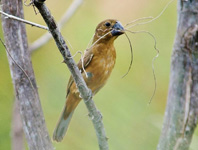Abstract
A new species of the fossil stonefly genus Largusoperla Chen, Wang & Du, Largusoperla difformitatem sp. nov. is reported new to science from mid-Cretaceous Burmese amber. The morphological characters of the new species are described, illustrated, and compared to other known species of the genus. The unique morphological characters of Largusoperla, including the asymmetrical paraprocts of L. difformitatem sp. nov. are discussed from a possible evolutionary perspective.
References
Alexander, K.D. & Stewart, K.W. (1996) Description and theoretical considerations of mate finding and other adult behaviors in a Colorado population of Claassenia sabulosa (Plecoptera: Perlidae). Annals of the Entomological Society of America, 89 (2), 290–296.
https://doi.org/10.1093/aesa/89.2.290Berthélemy, C. (1979) Accouplement, période d'incubation et premiers stades larvaires de Brachyptera braueri et de Perlodes microcephalus (Plecoptera). Annales de Limnologie, 15 (3), 317–335.
https://doi.org/10.1051/limn/1979015Burmeister, H. (1839) Zweite Halfte. Neuroptera. Handbuch der Entomologie. Reimer, Berlin, 863 pp.
Boudreaux, H.B. (1979) Arthropod phylogeny, with special reference to insects. John Wiley & Sons, Inc., New York, 320 pp.
Brinck, P. (1956) Reproductive system and mating in Plecoptera. Opuscula Entomologica, 21, 57–127.
Crampton, G.C. (1938) The interrelationships and lines of descent of living insects. Psyche, 45 (4), 165–181.
https://doi.org/10.1155/1938/18939Chen, Z.T. (2018) Pinguisoperla, a new fossil genus of Perlidae (Insecta: Plecoptera) from mid-Cretaceous Burmese amber. Zootaxa, 4425 (3), 596–600.
https://doi.org/10.11646/zootaxa.4425.3.13Chen, Z.T., Wang, B. & Du, Y.Z. (2018) Discovery of a new stonefly genus with three new species from mid-Cretaceous Burmese amber (Plecoptera: Perlidae). Zootaxa, 4378 (4), 573–580.
https://doi.org/10.11646/zootaxa.4378.4.8Huber, B.A., Sinclair, B.J. & Schmitt, M. (2007) The evolution of asymmetric genitalia in spiders and insects. Biological Reviews, 82 (4), 647–698.
https://doi.org/10.1111/j.1469-185X.2007.00029.xKômoto, N., Yukuhiro, K. & Tomita, S. (2012) Novel gene rearrangements in the mitochondrial genome of a webspinner, Aposthonia japonica (Insecta: Embioptera). Genome, 55 (3), 222–233.
https://doi.org/10.1139/g2012-007Linnaeus, C. (1758) Systema natura per regna tria naturae secundum classes, ordines, genera, species, cum characteribus, differentiis, synonymis, locis. 10th Edition. Vol. 1. Salvii, Holmiae, 824 pp.
Letsch, H. & Simon, S. (2013) Insect phylogenomics: new insights on the relationships of lower neopteran orders (Polyneoptera). Systematic Entomology, 38 (4), 783–793.
https://doi.org/10.1111/syen.12028Latreille, P.A. (1802) Histoire naturelle, générale et particulière des crustacés et des insectes: ouvrage faisant suite aux oeuvres de Leclerc de Buffon, et partie du cours complet d'histoire naturelle rédigé 3. De L’imprimerie de Crapelet, Paris, 467 pp.
Moreira, G.R.P. (1998) Reproductive morphology and copulatory mechanism of the stonefly Agnetina capitata (Pictet) (Plecoptera, Perlidae). Revista Brasileira da Entomologia, 41, 267–283.
Maketon, M. & Stewart, K.W. (1988) Patterns and evolution of drumming behavior in the stonefly families Perlidae and Peltoperlidae. Aquatic Insects, 10 (2), 77–98.
https://doi.org/10.1080/01650428809361316Ross, E.S. (1970) Biosystematics of the Embioptera. Annual Review of Entomology, 15, 157–172.
https://doi.org/10.1146/annurev.en.15.010170.001105Ross, E.S. (2000) Origin, relationships and integumental anatomy of the insect order Embiidina. Occasional Papers of the California Academy of Sciences, 149 (1), 1–53.
Stark, B.P. & Sivec, I. (2007) New species and records of Asian Peltoperlidae (Insecta: Plecoptera). Illiesia, 3 (12), 104–126.
Shi, G., Grimaldi, D.A., Harlow, G.E., Wang, J., Wang, J., Wang, M., Lei, W., Li, Q. & Li, X. (2012) Age constraint on Burmese amber based on U-Pb dating of zircons. Cretaceous Research, 37, 155–163.
https://doi.org/10.1016/j.cretres.2012.03.014Sauquet, H., von Balthazar, M., Magallón, S., Doyle, J.A., Endress, P.K., Bailes, E.J., de Morais, E.B., Bull-Hereñu, K., Carrive, L., Chartier, M. & Chomicki, G. (2017) The ancestral flower of angiosperms and its early diversification. Nature Communications, 8, 16047.
https://doi.org/10.1038/ncomms16047Stewart, K.W. (2001) Vibrational communication (drumming) and mate-searching behavior of stoneflies (Plecoptera); evolutionary considerations. In: Domínguez, E. (Ed.), Trends in Research in Ephemeroptera and Plecoptera. Springer, Boston, pp. 217–225.
Stewart, K.W. & Stark, B.P. (1977) Reproductive system and mating of Hydroperla crosbyi: a newly discovered method of sperm transfer in Insecta. Oikos, 28, 84–89.
https://doi.org/10.2307/3543326Stewart, K.W. & Maketon, M. (1991) Structures used by Nearctic stoneflies (Plecoptera) for drumming, and their relationship to behavioral pattern diversity. Aquatic Insects, 13 (1), 33–53.
https://doi.org/10.1080/01650429109361422Stefani, R. (1953) Un particolare modo di accoppiamento negli Insetti Embioterri. Rendiconti dell’Accademia Nazionale dei Lincei (Classe di Scienze Fisiche, Matematiche e Naturali), Serie 8, 14, 544–549.
Snodgrass, R.E. (1937) The male genitalia of orthopteroid insects. Smithsonian Miscellaneous Collections, 96, 1–107.
Sahney, S., Benton, M.J. & Falcon-Lang, H.J. (2010) Rainforest collapse triggered Carboniferous tetrapod diversification in Euramerica. Geology, 38 (12), 1079–1082.
https://doi.org/10.1130/G31182.1Zwick, P. (2000) Phylogenetic system and zoogeography of the Plecoptera. Annual Review of Entomology, 45, 709–746.
https://doi.org/10.1146/annurev.ento.45.1.709Zwick, P. & Surenkhorloo, P. (2005) The Mongolian species of Isoperlinae (Plecoptera: Perlodidae). Acta Zoologica Academiae Scientiarum Hungaricae, 51 (3), 253–276.
Zwick, P. (2009) The Plecoptera—who are they? The problematic placement of stoneflies in the phylogenetic system of insects. Aquatic Insects, 31 (Supplement), 181–194.
https://doi.org/10.1080/01650420802666827Zhou, Z. (2004) The origin and early evolution of birds: discoveries, disputes, and perspectives from fossil evidence. Naturwissenschaften, 91 (10), 455–471.
https://doi.org/10.1007/s00114-004-0570-4Zhou, Z. & Zhang, F. (2002) A long-tailed, seed-eating bird from the Early Cretaceous of China. Nature, 418 (6896), 405.
https://doi.org/10.1038/nature00930

